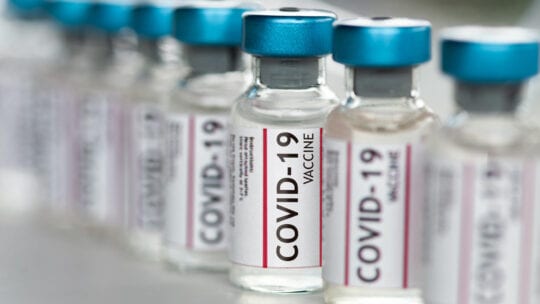
Scientific communication doesn’t lend itself to being fun, simple, or easily understood. Even the recent historic Food and Drug Administration (FDA) approval of the first COVID-19 vaccine is causing confusion and concern among large segments of the population—so much so that the holy grail of herd immunity is being threatened.
Efforts are underway to begin the monumental task of ensuring that approximately 70 percent of Americans get vaccinated so we can reach herd immunity. As commentators have pointed out, to achieve this we need to move from Operation Warp Speed to “Operation Build Trust.”
During the FDA Advisory Committee meeting, acting chair Dr. Arnold Monto pointed out that many people may wait to get vaccinated until they know more about it. “Facts may be important, but perception drives a lot of decisions,” Dr. Monto said. Whether or not he realized it, his statement drew on a distinction that goes back to at least about 400 BCE. That's when Plato concluded knowledge is objective and absolute, while perception is subjective and differs based on the individual.
Facts and Perception
Both Plato and Dr. Monto are right. Facts are important, certainly. Yet, if you want to change minds and ultimately influence behavior, address perception, too. Full stop.
Doctors and scientists often fail to realize this; they stubbornly cling to facts and pound them over and over again. But spewing data and statistics to people who have deep-seated concerns can make experts appear tone-deaf, and completely out of touch with the realities of much of America.
What’s critical to understand is that communities have different reasons for their hesitancy. Since those reasons are complex, a one-size-fits-all messaging approach won’t work. For example, the African-American community has experienced serious historical transgressions at the hands of the healthcare system. A doctor can recite statistics over and over, but how can someone trust the physician's data when they have been lied to previously?
Speak Your Audience's Language
To change behaviors, we need to tailor the way we speak to people’s “preferred cognitive decision-making style,” according to Caroline Poland, a licensed mental health counselor who has published widely on vaccine hesitancy. In other words, speak their language in a way that matters to them. This, PR pros know, is the art of effective communication in a nutshell.
Poland suggests communicators draw on experts from other areas besides science, including behavioral psychologists, cultural anthropologists, communication experts, futurists, and more. The goal is to figure out what makes people tick, and how they make decisions. Then, armed with that information, we must tell stories that resonate with their experiences—so they can see themselves in the story.
To be persuasive about scientific topics, healthcare officials need to put themselves in the shoes of their audiences. Think about what they want and need to hear. Be ready to distill your message in a few clear sentences.
So, let me do that for you: addressing public concerns about the COVID-19 vaccine is not as simple as reciting facts about its safety and efficacy. Communicators must understand differing perceptions and address them in kind, communicating in a way that resonates with each audience.
It’s the only way we will ever be able to defeat this virus.
Cindy DiBiasi is a senior communications strategist, writer, and executive communication coach at 3D Communications
